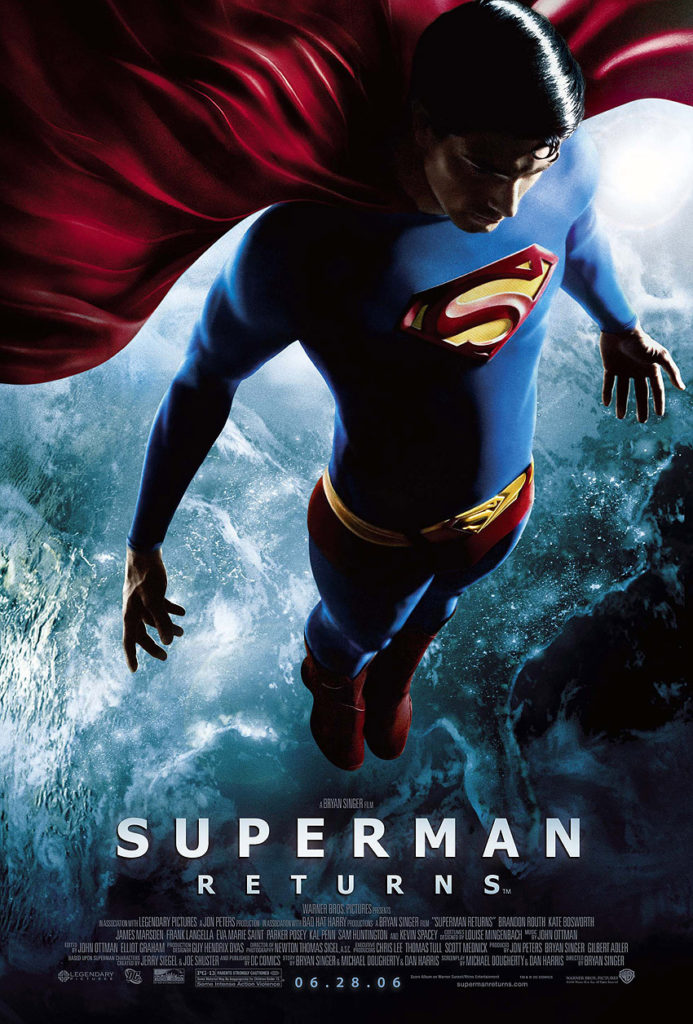Badfan v Superman 4: Able To Leap Expectations
SpecFaith staff explorers E. Stephen Burnett and Austin Gunderson share their conversation about Man of Steel and how the film flies over many critics’ heads. See part 1, part 2, part 3, or read the the whole Badfan v Superman series so far.
Austin Gunderson: I find it astonishing that anyone would find [Man of Steel’s darker-toned] approach somehow forced, as though [Man of Steel director Zach] Snyder’s only interested in riding The Dark Knight trilogy’s coattails to the box office. To assume that humanity would respond appropriately to someone as fundamentally good — whether by nature or nurture — as Superman would be to ignore human nature itself.
Stephen Burnett: It sounds like we’re honing in on two key themes:
- The complaint that “Man of Steel isn’t colorful” is really a complaint about the story and themes themselves not being a certain way, with color as symbol of that.
- The assumption is the Superman “should” be a certain way — which we’re arguing is like saying Sherlock Holmes is “supposed” to say “Elementary” all the time. It’s a popular-culture myth about the character based on only one incarnation of it.
More on both these themes:
Austin, you’ve stated that you believe Synder did things intentionally, not only with color grading but “theme grading”—“a serious take on Superman.”
I agree with this, though not because I’m a huge Synder fan. (None of his other films interest me and I’ve only seen his Man of Steel.) Instead it’s because I read interviews in which he very thoughtfully, and off-script, discussed what he wanted the story to do. This is contradictory to thoughtless criticism of big-budget directors to the effect that they only follow visual trends, chase the money, and so on. It’s more complex than that. Really skilled directors are able to do all these things and find room for artistic originality and creativity.
To a large extent I walked into Man of Steel expecting what Synder promised: an attempt at a more-realistic take on Superman that would still do justice (or truth, justice, and the American way) to our hero. I got basically what I expected.
 To those who expected otherwise I would ask, “What did you expect?” Some might say, “Something more like the Christopher Reeve Superman.”
To those who expected otherwise I would ask, “What did you expect?” Some might say, “Something more like the Christopher Reeve Superman.”
And first I would remind them that they got that in Superman Returns (2006). That film basically operated in continuity with the first two films — right down to having Superman deal with the consequences of his affair with Lois Lane.
Oh wait … maybe we’re not supposed to address more-realistic consequences?
Because Superman is supposed to be only fluffy and colorful?
(I myself think Superman Returns is underrated, but I understand the motives for some fans’ criticism.)
Second, I would remind them that there’s plenty of room for different tones and story types in the superhero story genres. Some stories can be “lighter” and less challenging. Others can be more challenging, as Austin mentioned. Why exclude Superman? Because he’s old? Because he’s not cool? That’s chronological snobbery. Or is it because we’re simply all supposed to be Marvel fans now and make fun of “dark, brooding” stories? This is both ridiculous and inconsistent, because:
- Man of Steel and its hero aren’t dark and brooding, only challenging.
- Marvel recently kicked off its own “grimdark” offering with “Daredevil” on Netflix.
Some folks will scowl when I say that Superman in Man of Steel isn’t grimdark. They’ll instantly say that Superman killed General Zod and that’s bad. Superman doesn’t do that. But I’ve already mentioned that yes, he does. As we discussed in part 2, spoiler alert: In Superman II, either version, Superman kills Zod. (Yes, I’m ignoring the famous outtake that shows the criminals being led away by magically appearing and cheesy Arctic police!)
So let’s talk about that, perhaps starting with these questions:
Given: Superman kills General Zod in Superman II, by calmly de-powering the villain in private, feigning to surrender, then crushing his hand and tossing him off an ice cliff;
Given: Superman also kills Zod in Man of Steel, by barely strong-arming the villain in public, wrestling to keep him from killing innocent people, then snapping his neck;
Then: Why do people complain about the Man of Steel death and not the Superman II death?
(Hint: Once again we’re back to the “color” palette. Story styles can lull us!)
Read Badfan v Superman 5: You’ll Believe A Man Can Die. Or see the entire Badfan v Superman series.










































I loved Superman Returns. It was introspective and melancholy. I can see why people worry about Man of Steel being too dark, though, just based on how the Batman movies have been going. Realistic doesn’t have to mean grimdark. And sometimes people judge from the outside and their worries/could-bes rather than from the inside and the actuality.
I enjoyed Superman Returns as a return to the classic-y style Superman, despite some moody bits and the arguable miscast of Lois Lane. It did so many things right, particularly the recapturing of the Donner-era Superman film series (the best parts). In fact, at the time I only heard positive things from everyone who saw the film. Even my own parents (who never go see superhero movies) went out and saw it and enjoyed it. Then at some point the goodwill faded and public opinion decided it was only ever lackluster. In retrospect I can see some of those points, but I recall my initial positive response and haven’t moved from that. Also, John Ottman’s soundtrack was and remains an amazingly fun romp through Williams’ classic themes, and new ones!
Well, it’s the “agony beam” problem for one. Superman II had the violence as abstract, and one of the most cringe-inducing ways to be violent in a pg-13 manner is snapping necks. Agony beams are devices that abstract violence (usually the villain torturing the hero) in order not to overly sicken the audience. Man of steel’s problem probably was the killing was too visceral.
As for the movie, I think you two better not build it up too much. My guess is that it’s going to be some pretty bad camp.